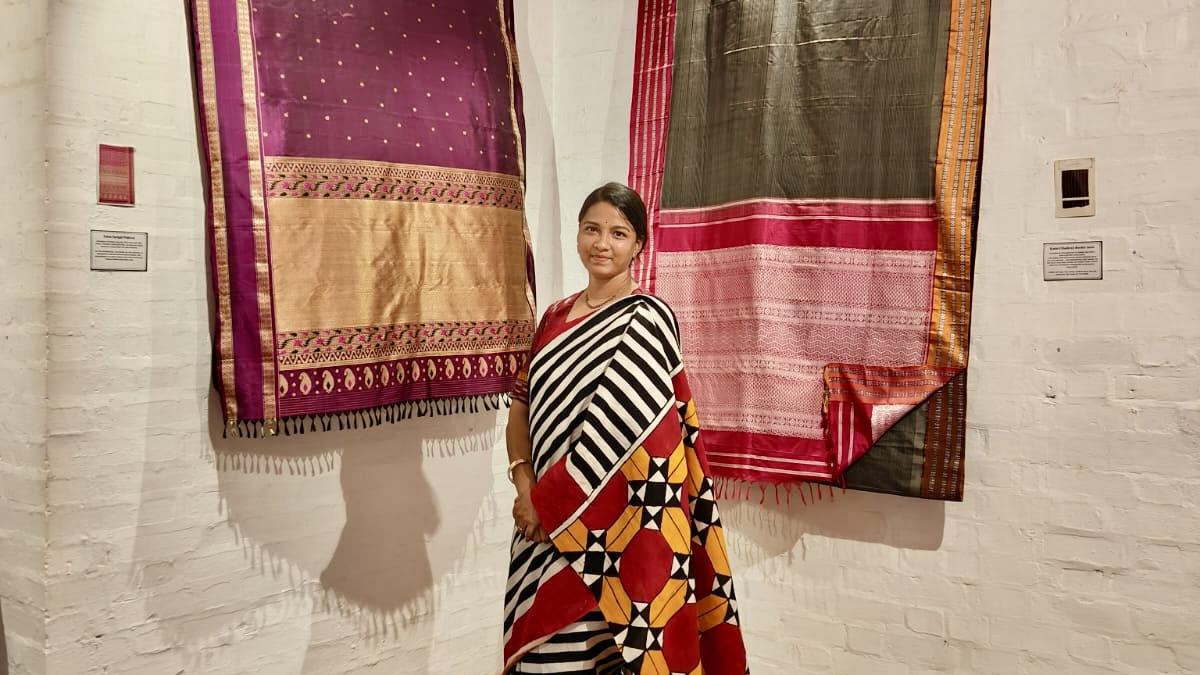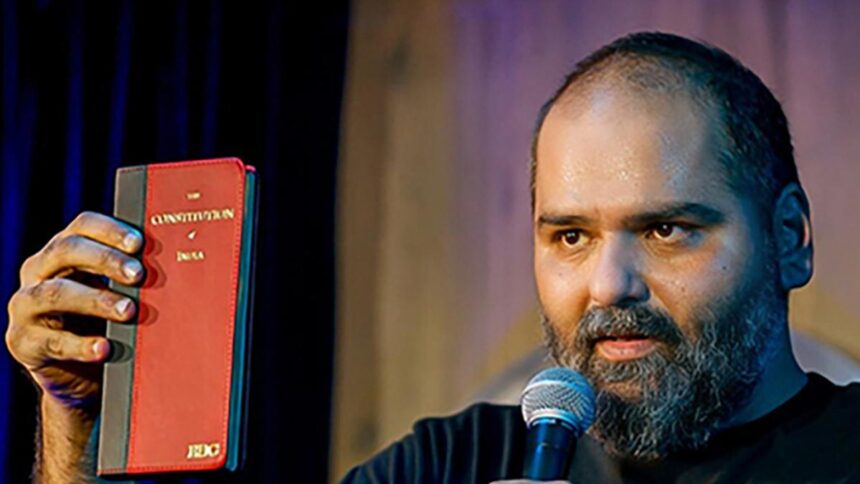
K.K. Gayathri at an exhibition at Dakshin Chitra, showcasing her handloom textiles
| Photo Credit: Special Arrangement
For many people in Chennai, the daily commute to work is mundane, filled with the background noise of honking horns and endless scrolling on phones. But for Gayathri K.K., an IT engineer working at an MNC in Chennai, the long three-hour journey from Ambattur to Sholinganallur, back and forth, became the loom on which she would weave a brand-new passion.
“Three to four hours on the road every day, it felt like an eternity where I didn’t know what to do with myself. And back in 2017, saree reselling was the trend,” recalls Gayathri.
Before you assume, reselling was just the beginning for Ms. Gayathri. It led her to something far more profound: the world of handloom textiles. One Google search led to another, one handloom saree led to many stories, and before too long, Ms. Gayathri found herself working to rediscover and revive lesser-known textile techniques of Tamil Nadu, from Ayyampettai’s Kutni to Thanjavur’s Ikkat, with the help of a few weavers she now collabarates with.
But as with any passion worth pursuing, the road was not smooth. “I visited Woraiyur to seek help from weavers. There’s this famous ‘1,010 weavers colony’ there, which is named so because once upon a time, 1,010 weavers worked there. Today, only a handful remain. Most were elderly and hesitant to even take up the work again. Many even had no looms left,” she says, adding how the craft is fighting for its survival in many towns.
Her encounter with Thanjavur weavers wasn’t any easier. “Kutni weaving has centuries of history, and so I persisted. Slowly, the weavers came around to help me in my journey of creating handloom textiles, with the motive of rediscovering the unique weaving techniques,” says Ms. Gayathri, who is now an independent textile researcher, while working her IT job. Her weekends are spent on field visits, hopping between villages to collaborate with weavers, learning forgotten weaving techniques, and handpicking fabrics. One of the most important parts of her job is also going through old museum archives and recreating those sarees with the help of weavers.
Juggling careers
“Boundaries,” says Ms. Gayathri, “help me juggle being an engineer and a textile researcher at the same time.”
“I stick to my 9-to-5 schedule strictly at work. I always believe a full-time career is very important for your financial independence, which can fund your other dreams. And I have a very expensive hobby!” says the engineer-textile researcher, who now has an audience for her handloom textiles.
She credits her workplace for its healthy work culture that allows her to pursue other passions, and her family for standing by her, especially as she raises her one-year-old son.
“I just cannot stop creating art, and creating textile from scratch is a form of art,” Ms. Gayathri adds. Starting with Thanjavur Ikkat, experimenting with Kutni, and some really old weaving techniques like Adai and Petni, Ms. Gayathri is trying out a form of batik called Mezhugezhuthu. “All I ask people is to visit you nearest co-operative society and see what they are doing, and help out if you can. And most importantly, just listen to their stories. That is how we keep their stories and artform alive.”
Published – August 22, 2025 06:30 pm IST




















